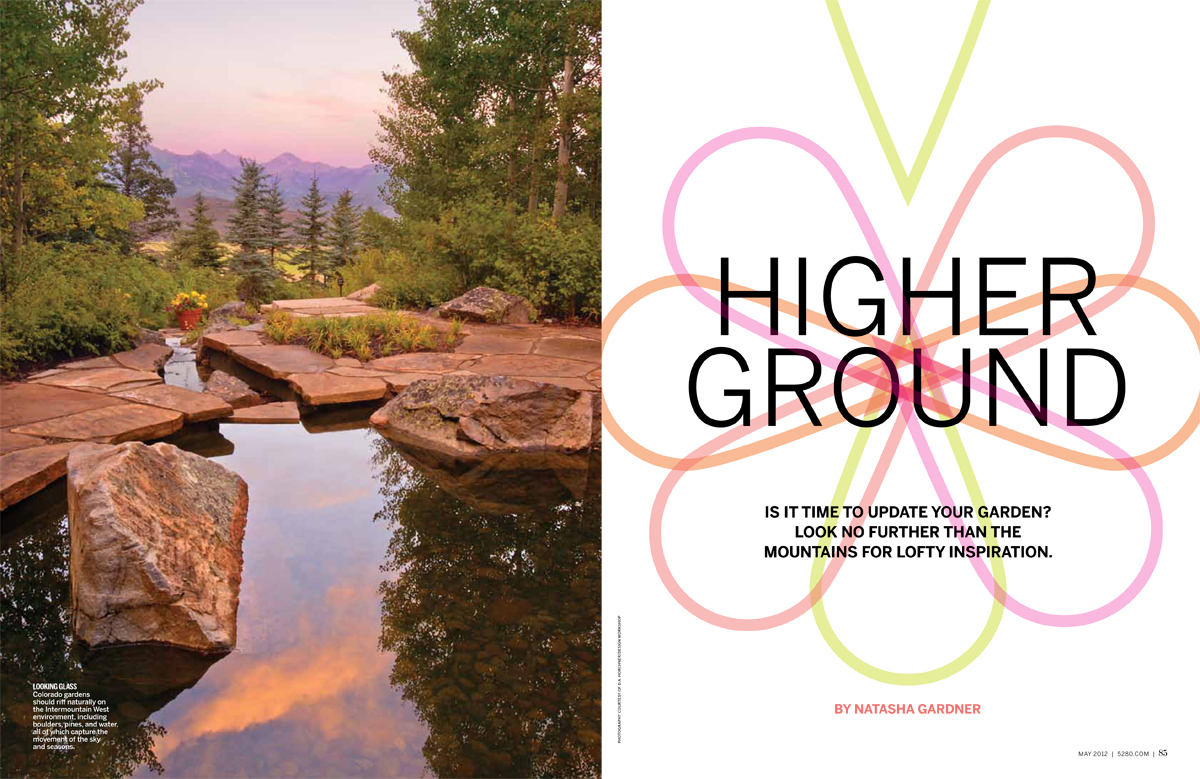The Local newsletter is your free, daily guide to life in Colorado. For locals, by locals.
Ask a Colorado gardener about cultivating a backyard paradise and they’ll quickly point out the challenges of growing in this high-altitude, arid climate. The biggest obstacle, though, may simply be the competition. No, we’re not talking about your neighbor’s perfectly manicured lawn. It’s the fourteeners, wildflower meadows, aspen groves, and alpine lakes that can put city gardening attempts to shame. ?Don’t despair. For 43 years, Design Workshop, a landscape architecture firm with offices in Aspen and Denver, has focused on creating gardens that draw inspiration from the Centennial State’s natural high-country beauty instead of trying to compete with it. “We are lucky to practice in the Rocky Mountain area because it is so different—a vast, remarkable kind of setting,” principal Richard Shaw says. “The environment is so diverse and unimaginably interesting, from desserts to glaciers. We want to be part of these landscapes.” ? The 80-person firm starts by discovering what makes a place unique to Colorado—and then builds a design around those one-of-kind features, such as stones, mature trees, migrating animals, and existing structures. We recently spoke with Shaw, who has 36 years of experience at Design Workshop, about how to bring those mountain-friendly concepts to urban backyards. designworkshop.com
Wildflowers
A short growing season and droughtlike conditions don’t mean you have to sacrifice color. Richard Shaw suggests planting native flowering plants like late-blooming echinacea, drought-hardy yarrow, or delicate columbine plants (our state flower). For quick-growing bursts of bright color, sow cosmos, which are not indigenous to Colorado but bloom quickly in Denver.
Quick Tip: Use taller plants, like hollyhocks, to create a dramatic backdrop for any cutting garden and to frame flowerbeds against imposing building structures.
Fire Element
Don’t have a view of a mountain valley from your yard? Don’t worry, Shaw says, because memorable gardens create moments. Sometimes those are grandiose vistas; often they are more intimate settings like fire pits. “Nothing quite says home as using a fireplace as a gathering place,” Shaw says.
Quick tip: Use natural stone, like flagstone, on your patio and fire pit. It is versatile, durable, and it “anchors a design to the ground,” Shaw says.
Pathways
Treat a path as more than just a way to get from the garage to the patio. “Many times the pathway isn’t a direct link from one space to another, but a journey,” Shaw says. “You can control the pace of walking. You can make people subtly, and sometimes unconsciously, slow down.” Think about how people go from one place to another and draw out that experience with plants, natural stone steps, and lighting.
Quick Tip: Pair cold, stone stairs with bright, hardy plants that can survive in small spaces, like sedum and thyme, for small bursts of green.
Water
Abundant water is the lifeline of Rocky Mountain vegetation, and while this resource is more scarce in Denver, you can still use it to bring extra vigor to your own garden. Have an eyesore, like a giant rock or a nasty slope? Work around it. For this oval pool (left), the massive boulder was on-site. Instead of hauling it away, Design Workshop made it a focal point.
Quick tip: Can’t fit a pool in your yard? The trickling sounds from a water fountain will do just fine. “There is a complete transformation of landscape where’s there’s water,” Shaw says.









